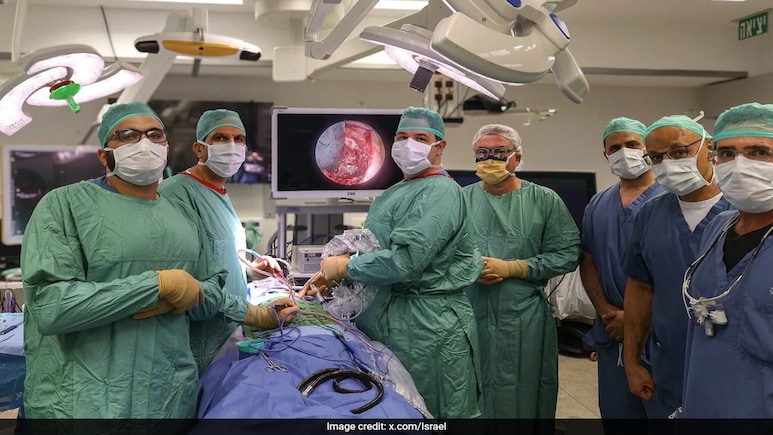
Doctors have performed Israel's first-ever minimally invasive brain surgery through the eye socket. Surgeons at Ichilov Medical Centre have successfully removed a rare skull base tumour without the need to open the skull.
The procedure, conducted on July 21, was made possible through the collaboration of specialists in neurosurgery, oculoplastics, and ENT (ear, nose, and throat). The young patient has reportedly regained her health with minimal disruption to her vision and appearance.
"A milestone in patient-centered neurosurgery," said the state of Israel, calling it a "medical breakthrough."
Official photos released by Ichilov show the medical team in action, dressed in scrubs, caps, and masks during the operation. Another slide captures the team posing together after what appears to be a successful surgery.
Medical breakthrough in Israel!
— Israel ישראל (@Israel) August 31, 2025
At Ichilov Medical Center, on July 21, doctors performed Israel's first-ever minimally invasive brain surgery through the eye socket – removing a rare skull base tumor without opening the skull.
Thanks to the teamwork of neurosurgery,… pic.twitter.com/hzu8jUeE8Y
Similar procedures have been performed internationally.
In May, the University of Maryland Medical Centre in the US removed a rare spinal tumour through a patient's eye socket. The 19-year-old patient recovered fully.
Earlier in January, Leeds Teaching Hospitals NHS Trust in the UK performed the country's first eye-socket keyhole surgery to remove a brain tumour in the cavernous sinus. Advanced 3D modelling enabled minimal side effects and a three-month recovery.
What Are Skull Base Tumours?
Skull base tumours are abnormal growths located at the bottom of the skull, an area that houses critical structures such as the brainstem, cranial nerves, and major blood vessels. These tumours can be benign or malignant and may affect functions like vision, hearing, balance, and facial sensation, as per Hopkins Medicine and the California Neurological Institute.
Surgery Options
Surgical treatment is often required to remove skull base tumours. There are two primary approaches: minimally invasive (endoscopic) surgery and traditional open surgery, as per NYU Langone Health.
Minimally invasive surgery uses small incisions or natural openings, such as the nostrils or eyelid, to access the tumour. This approach reduces recovery time, minimises scarring, and lessens postoperative pain. It is particularly suitable for tumours located in areas like the pituitary gland, cavernous sinus, or paranasal sinuses.
Traditional open surgery involves larger incisions, such as an eyebrow craniotomy, and is necessary for tumours in lateral or difficult-to-access areas. This allows surgeons to remove tumours that cannot be safely reached endoscopically, as per UCSF.
Track Latest News Live on NDTV.com and get news updates from India and around the world

